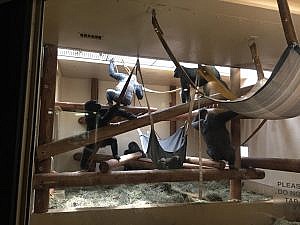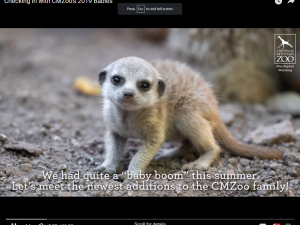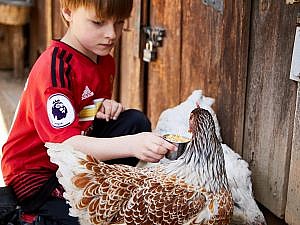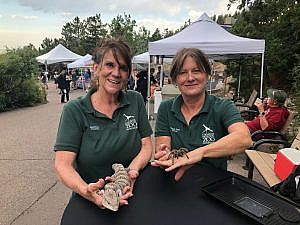-
An Update on Water’s Edge: Africa

“When will the new hippo and penguin exhibit open?” has been a common question we’ve received both in-person and online for the past several months. Our President & CEO, Bob Chastain, is here to give you a few updates on why we can’t pinpoint an exact opening date for you just yet, and what has . . .
-
An Update on Malaika, CMZoo African Elephant

‘Golden Girl’ Malaika, an African elephant who required emergency assistance after not being able to stand up on her own earlier this year, continues to receive specialized care for her broken tusks, thinning foot pad, deformed back leg and other age-related issues. Elephant Animal Care Manager, Jason Bredahl, gets us up close and describes the . . .
-
Thanksgiving Break Camps

If you’re looking for fun and educational activities for the kids the Monday, Tuesday and Wednesday of Thanksgiving week, look no further than Cheyenne Mountain Zoo Fall Break Camps! Registration is open now. On November 25, 26 and 27, 2019, kids from kindergarten to sixth grade can take part in one or all three days . . .
-
Giraffe Calf Milestones (and How Viv Measures Up)

CMZoo year-round sponsor, Children’s Hospital Colorado, has created a guide to first-year doctor visits for human babies. Similarly, Cheyenne Mountain Zoo’s experience with our prolific giraffe breeding program, founded in 1954, gives us some great milestones for the first year of life for a giraffe calf. Let’s see how Viv, CMZoo’s giraffe calf born to . . .
-
Gorilla Troop Integration Progress Continues Amid Health Scare

Cheyenne Mountain Zoo’s Western lowland gorilla troop of five has been working to acclimate to a cohesive living situation since Goma, a 28-year-old silverback, joined CMZoo in May 2016. After years of introductions that have taken longer than keepers anticipated, the tentative success of this summer’s introductions was critical in deciding whether to continue making . . .
-
Cheyenne Mountain Zoo Mourns the Passing of ‘Grandma Kaya,’ 13-year old Mountain Lion

Cheyenne Mountain Zoo is mourning the loss of Kaya, a 13-year-old mountain lion who lived a long life at CMZoo after being orphaned in the wild in Wyoming in 2006. This summer, she again captured the hearts of guests when she earned the nickname 'Grandma Kaya' by embracing the presence of three young kittens who were also orphaned in the wild and came to live at CMZoo.
-
Scary! Only Eighteen Days Until Boo at the Zoo
Tickets are on sale now for seven nights of spooktacular activities over two weekends and Halloween night Colorado Springs, Colo. – Cheyenne Mountain Zoo will feel the Halloween spirit when thousands of little ghouls and goblins attend Boo at the Zoo beginning Friday, Oct. 18, 2019. The event is a fun way for families to . . .
-
Checking in with CMZoo’s 2019 Babies

We had a baby boom in 2019! From meerkat pups to mountain lion kittens to a giraffe calf and more, the seven species of babies are growing up fast. (Make sure you watch until the end to meet our latest addition: five meerkat pups!)
-
Checking in with the Chickens

Some people are surprised to learn that seventeen chickens live in Cheyenne Mountain Zoo’s My Big Backyard, where guests can also meet rabbits, koi fish, amphibians, insects, our honeybee colony, tarantulas, and more. The chickens are each named after famous chefs or tasty spices and all have unique personalities to match. It’s not unusual to . . .
-
Half a Century of Hustle: Celebrating CMZoo Docents’ 50th Anniversary

What started in 1969 as a way for CMZoo fans to take a more active and supportive role at the Zoo is now known as a fundamental arm of the organization. This month, the Cheyenne Mountain Zoo Auxiliary celebrated fifty years of important contributions, cultural impact, conservation advocacy and evolution. Two docents, Ellie Solomon and . . .
News Archive
